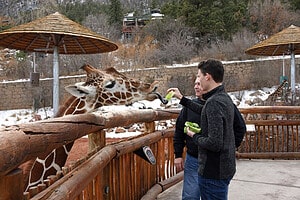The Omaha Henry Doorly Zoo and Aquarium is a wonderful place to visit and learn more about animals and their environment. While there isn’t a bad time of year to visit, some specific times do offer access to special events, fewer crowds, or ideal weather. Plus, you can take advantage of the large zoo and aquarium grounds to see many of the amazing animals.
The zoo dates back to 1894 when it was opened under the name Riverside Park Zoo. Many accolades for the zoo and staff center around the work that they do for animal conservation, much of which goes on behind the scenes. Because the zoo has such a long history, they have really been at the front of some cutting-edge exhibits and research. Some of the most notable things include the Lied Jungle indoor rainforest, the Desert Dome, and the Kingdoms of the Night indoor swamp.
Ideal Time to Visit Omaha’s Henry Doorly Zoo and Aquarium
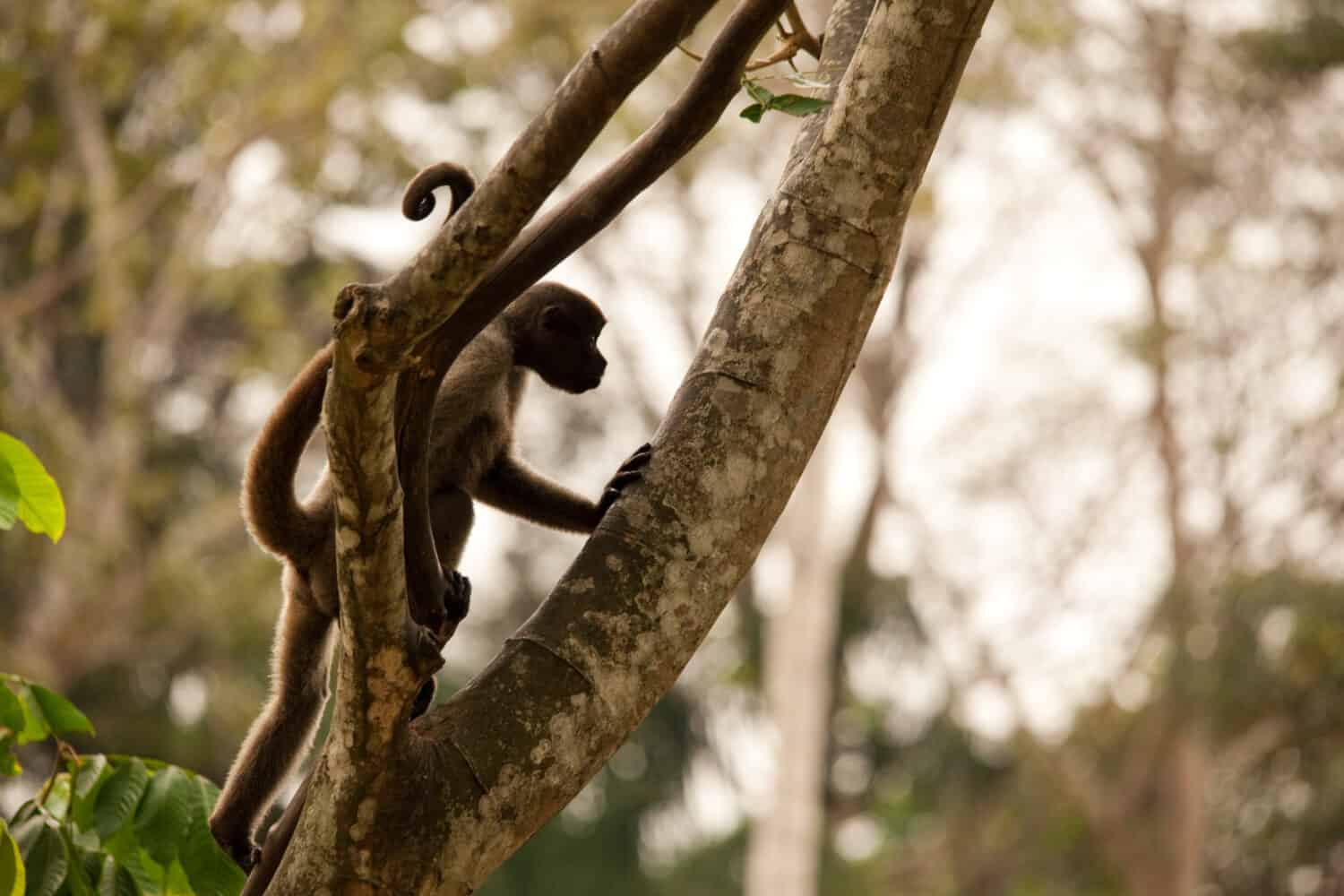
There are plenty of indoor and outdoor exhibits at the Henry Doorly Zoo and Aquarium in Omaha, Nebraska for visitors to see.
©Thiago Fernandes BHZ/Shutterstock.com
The zoo is great year-round in part because there are so many indoor exhibits to enjoy. Omaha gets cold temperatures in the winter and hot, humid summers. So having multiple indoor places to explore is key. Even if the temperatures outside are below freezing, you’ll feel tropical as soon as you step foot into the Lied Jungle. During the humid midwest summers, a stop at the Desert Dome is perfect. These indoor exhibits are very large and include multiple floors. You can spend all day indoors at the zoo and still not see everything!
There are also special events throughout the year that are worth marking on your calendar. Ghouls and Glows is the annual Halloween light show that takes place in the evenings in October all around the zoo. Visitors can enjoy trick or treating, animal encounters, and a lighted Halloween walk. Additional options include smores, pumpkin decorating, and carousel rides. Tickets do cost extra but are well worth it for the special memories made.
Summer months include adults-only late-night events. These are also extra but feature access to food trucks, themed cocktails, live music, and late-night access to some exhibits. Easter Bunny visits, Santa sightings, and others are all popular at the zoo. There are also plenty of opportunities for the public to volunteer and get involved in the zoo’s conservation efforts. The zoo also hosts escape challenges where participants have to solve riddles and find clues all around the zoo. There is never a bad time to visit the zoo but these special events make the visit extra special.
Animals at the Henry Doorly Zoo and Aquarium
With so many fantastic exhibits, it’s not surprising that there are equally interesting animals to see at the zoo. Here are some of the top critters to visit as well as some you may not have expected to see.
1. Sea Lions

Sea lions love to bask on rocks in the wild, which makes these features very important in a well-designed zoo enclosure.
©Patrick Rolands/Shutterstock.com
A visit to the Henry Doorly Zoo and Aquarium isn’t complete without seeing the sea lions. The pool where they swim is a whopping 275,000 gallons and the overall exhibit covers an entire acre. The window with an underwater view of the tank is 40 feet long so you never have to worry about getting an up close and personal look at the animals. They share the exhibit with harbor seals, who are also fun to see. One of the most amazing things going on in the exhibit is how well it mimics the natural environment that these sea lions would explore. Wave machines create current and the temperature of the water fluctuates to replicate the natural changing of the seasons. There are also beaches, rocks, an island, and even a pup beach for mothers to use with their young.
This exhibit is a good example of how the zoo prioritizes enrichment for the animals to encourage their natural behaviors. There are spots within the massive exhibit where keepers leave fish. This promotes fish-finding behavior, which the sea lions would need in the wild. It is also designed with visitors in mind and includes windows into an underwater cavern, plenty of space for viewing, and seating for up to 150 people to see training demonstrations.
2. Red Panda
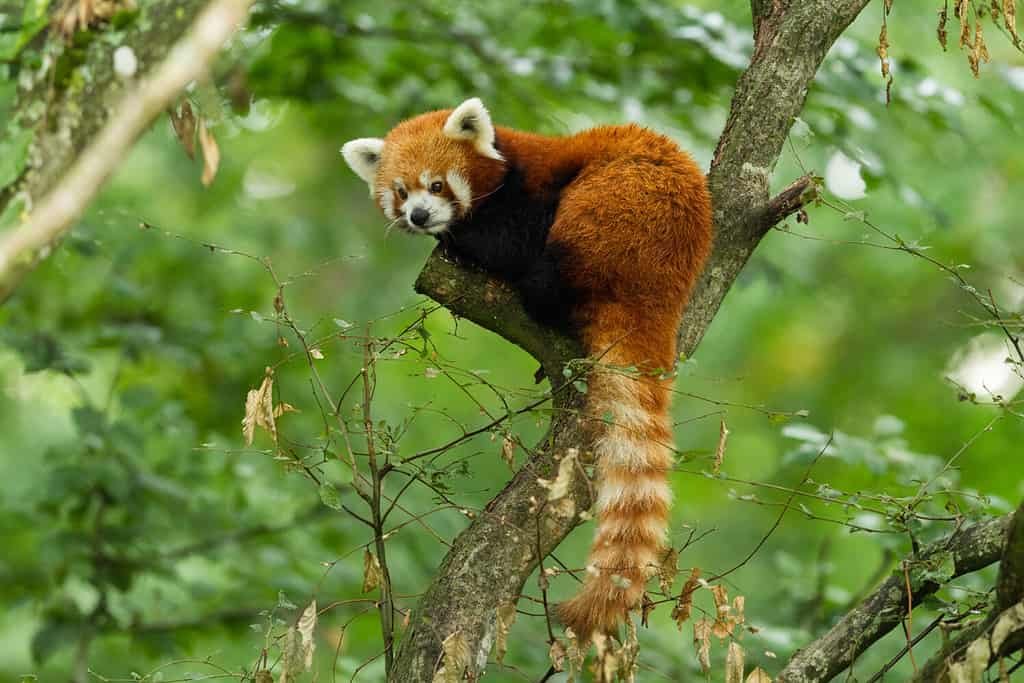
Red pandas can weigh up to 14 pounds but most are smaller.
©AB Photographie/Shutterstock.com
These animals are located in the Asian Highlands portion of the zoo. This section of the zoo is marked by a replica Himalayan ruin that stands over the entrance. The red pandas are some of the most popular animals in Asian Highlands, so expect some crowds, especially on sunny days. The red pandas are the first exhibit within this section and draw a lot of onlookers. But who can blame them? After all, these small pandas with adorable faces and distinct reddish-brown fur are fun to watch.
Other animals nearby include cranes, deer, Indian rhino, and sloth bear. What makes these animals a must-see is the way that they are kept. Asian Highlands has a vast natural landscape that allows plenty of space for the animals to roam and explore, just like they would in the wild.
3. Giraffe

Many zoo patrons like to get an up-close view of giraffes.
©Bull's-Eye Visual Arts/Shutterstock.com
Many visitors to the zoo love to see the giraffes. Omaha’s Henry Doorly Zoo and Aquarium goes above and beyond to let giraffe enthusiasts learn more about these majestic creatures. The giraffes can roam outdoors or go to a quieter indoor herd room. Outdoors, they share their enclosure in the Scott African Grasslands with impala, white rhino, ostrich, and spur-winged geese. Indoors, they have access to food and hay. The Hawkins Giraffe Encounter Area is also available for patrons to get a closer view and even to feed the giraffes, although you’ll have to schedule this special experience.
4. Lions

In the wild, a lion pride will often sit on rocks to get a good view of the surrounding area.
©Howard Darby/Shutterstock.com
Another animal in the Scott African Grasslands portion of the zoo, the lion is truly the king (or queen) of this part of the zoo. You can see these big cats sunning and stretching on a tall rock formation or prowling the grasslands, similar to what you would see in the wild. From their spot on the rocks, they can see the entire grassland. It looks like something just out of The Lion King!
Amazingly, this portion of the zoo includes a training demonstration area for the keepers to use. They work with the lions to provide enrichment opportunities, just like with so many other animals in the zoo. In addition to keeper-facilitated enrichment, the environment in the exhibit includes special things for the lions to explore. They especially enjoy a partial Land Rover vehicle, which is situated next to the glass of the enclosure, as well as heated rocks.
If you want to really get to know the lions, consider an overnight stay in one of the nearby Safari Tents. This camp features safari-style tents (with electricity) that are located next to the lion enclosure. Guests can roast marshmallows during the evening and enjoy a keeper-led night hike and morning hike around the zoo.
5. Macaws
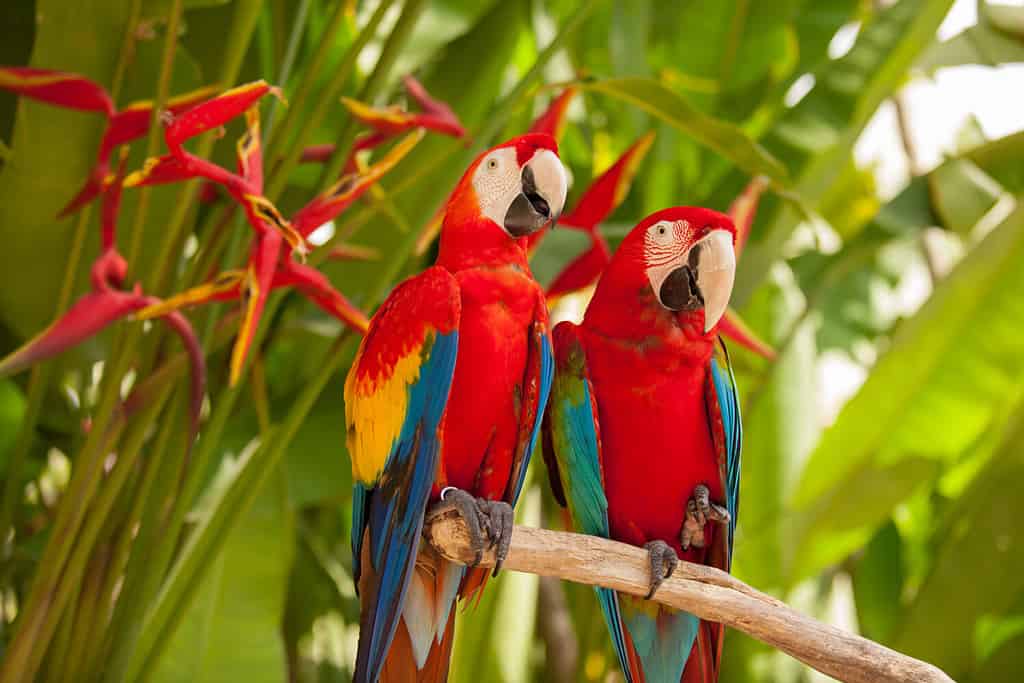
Macaws are found in the Lied Jungle as well as the Birds in Flight program at Omaha’s Henry Doorly Zoo and Aquarium.
©Katia Titova/Shutterstock.com
These birds, as well as others, are great to visit at the Dick and Mary Holland Meadowlark Theater. The Lied Jungle, which is another must-see, is home to macaws. But the demonstrations at the theater are really worth checking out. The Birds in Flight program put on at the theater allows visitors to not only learn more about these birds but also learn how they can help conservation efforts to help the species thrive. There are 35 different species featured in the Birds in Flight lineup, including scarlet macaws and blue and gold macaws. Many fly during the program to help visitors see them in action.
The big message of the Birds in Flight program goes beyond just seeing birds do tricks, however. While the birds do demonstrate their natural behaviors, the purpose of the program is to educate the public on what the birds can do and what the public can do to preserve their environment. If you like to get up close with birds, you’ll definitely have your chance. Some birds, such as the macaws, fly through the audience to various perches in the theater.
6. Inland Taipan

Inland taipan is the most venomous snake in the world, endemic to central Australia.
©iStock.com/AlizadaStudios
If you want to see an inland taipan, you should do so at the zoo. Seeing one in the wild could definitely be bad news since these are the most venomous land snakes in the world. Fortunately for snake enthusiasts, you can see an inland taipan in the Desert Dome, along with many other snakes. They are located in the Namib Desert section, which is known for its massive sand dune. The entire Desert Dome is situated around a central mountain. This mountain divides the deserts into three sections: the Namib Desert which features African and Australian wildlife, the Red Center of Australia which includes famous natural formations as well as animals and plants, and the Sonoran Desert region modeled on this Southwestern US and Mexico desert. If you still want to check out more venomous snakes, the Sonoran Desert includes the largest indoor rattlesnake exhibit inside Rattlesnake Canyon.
7. American Alligators

Alligators are dangerous and inhabit many southern U.S. waters.
©iStock.com/Cindy Larson
You should definitely make time to see the American Alligators in the Kingdoms of the Night portion of the zoo not just because they are amazing animals but also because their enclosure is just spectacular. Kingdoms of the Night is located under the giant sand dune in the Namib Desert portion of the Desert Dome. It is dedicated specifically to nocturnal animals as well as swamp-dwelling animals like the gators. The swamp covers a quarter of an acre and has 160,000 gallons of water, making it the largest indoor swamp in the world. Visitors walk through on a boardwalk and get to see the animals in their natural habitat. There are nine adult alligators in total. One is an all-white leucistic alligator. In the wild, predators would have likely eaten this animal early on in its life due to its inability to camouflage with its environment. Now, it lives at the New Orleans Zoo and is on loan to its home at Omaha’s Henry Doorly Zoo.
8. Gorillas
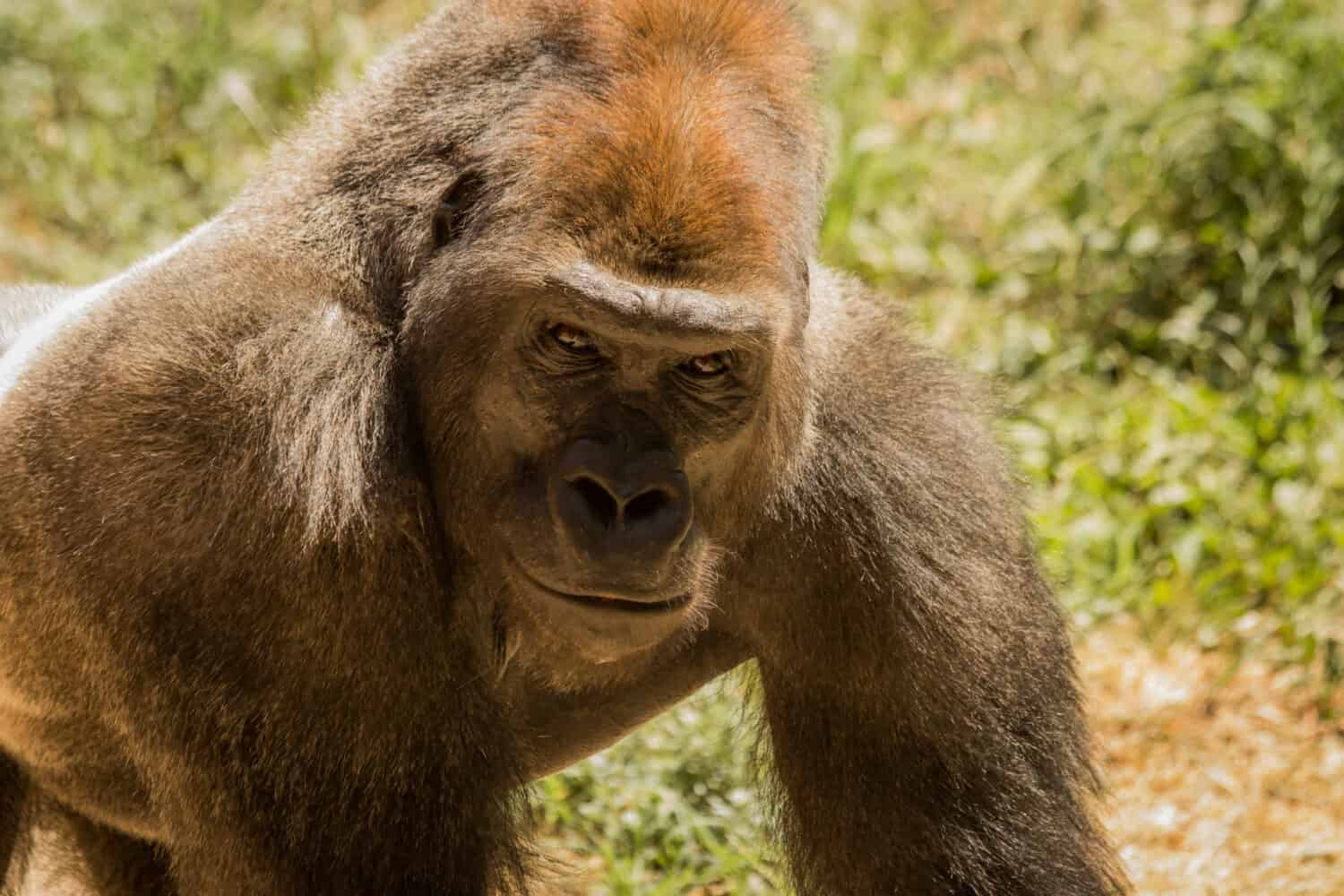
The Hubbard Gorilla Valley exhibit at Omaha’s Henry Doorly Zoo and Aquarium is a must-see for visitors.
©Dane Jorgensen/Shutterstock.com
The Hubbard Gorilla Valley made the Henry Doorly Zoo a major participant in gorilla conservation and research all the way back in 2004 when it opened. Today, the Hubbard Gorilla Valley includes plenty of climbing structures, shade and protection, waterfalls, and other areas for the gorillas to roam. It focuses on enrichment to keep these primates stimulated in similar ways to what they would experience in the wild. There are two acres of space for the gorillas to use, including both indoor and outdoor enclosures.
Nearby, you can check out orangutans and other animals to learn more about who gorillas might encounter in the wild. Hubbard’s Expedition Madagascar is notable for its close ties to on-site conservation and research facilitated by the zoo on the actual island of Madagascar.
9. Sharks

Nurse sharks
can grow to a length of 10 feet.
©Stevelaycock21 / CC BY-SA 4.0 – License
There are numerous species of sharks on display in the Suzanne and Walter Scott Aquarium. But the effect of the many sharks circling through the 70-foot shark tunnel is truly breathtaking. Brown sharks, nurse sharks, zebra sharks, wobbegong, epaulette sharks, albino bamboo sharks or cat sharks, swell sharks, bonnethead sharks, and chain dogfish sharks all call this aquarium home. The exhibits include plenty of information about the sharks, including where their natural habitat is in the world and information about their lifecycle. While visiting the aquarium part of the zoo, you can also check out sea turtles, fish, and plenty of other ocean life.
The photo featured at the top of this post is © Wirestock Creators/Shutterstock.com
Thank you for reading! Have some feedback for us? Contact the AZ Animals editorial team.




